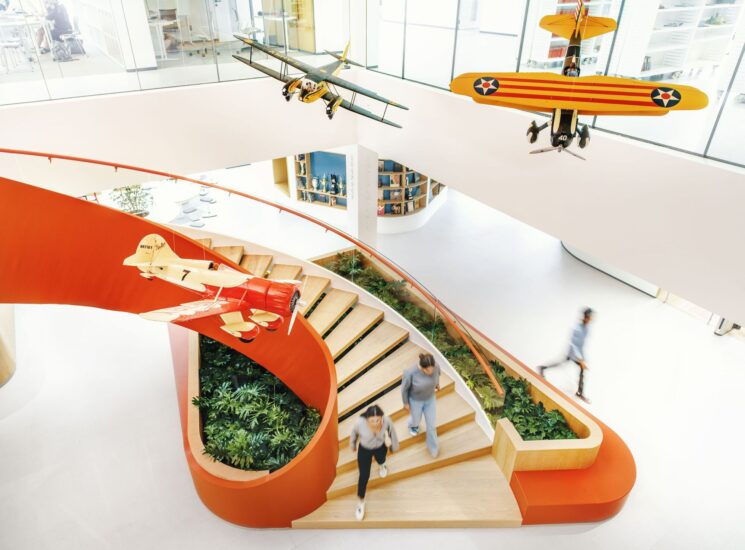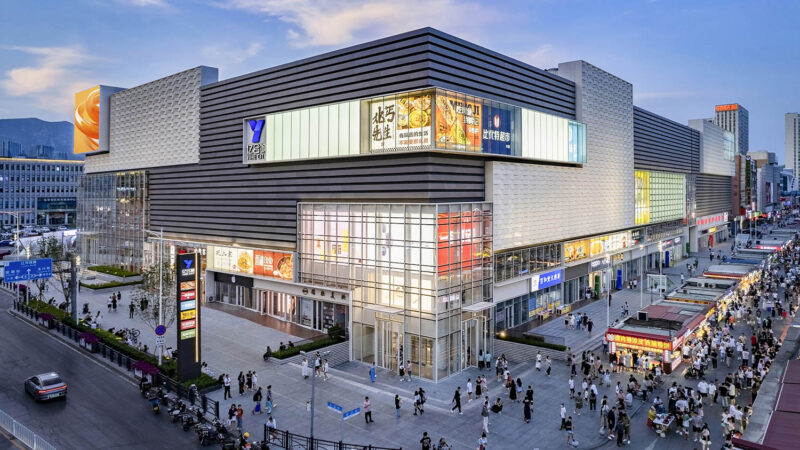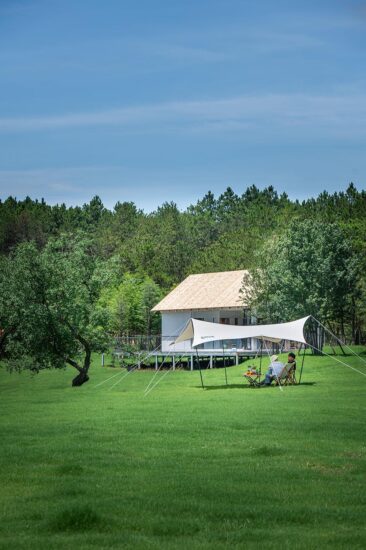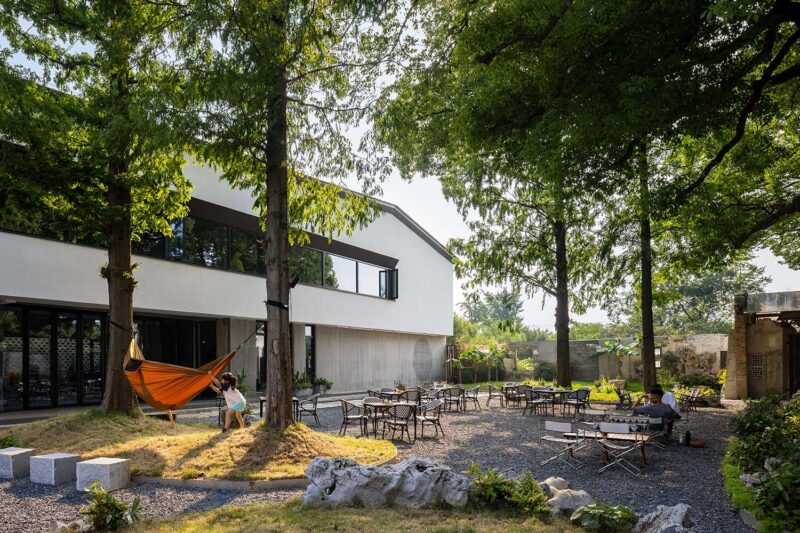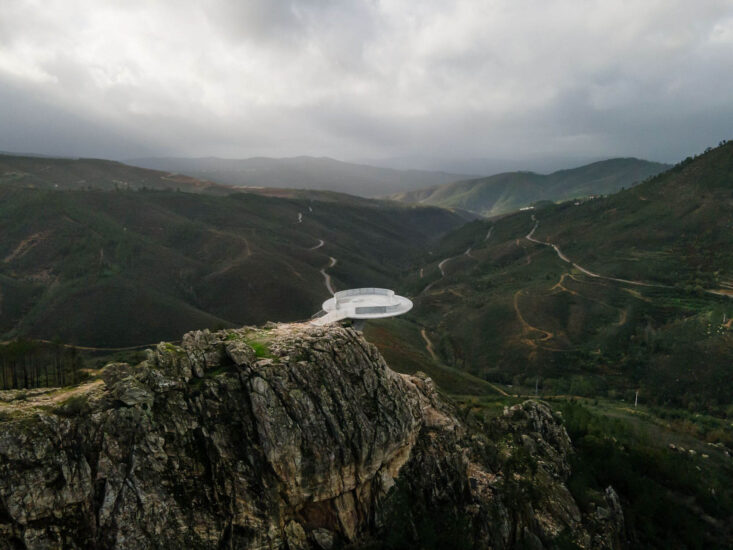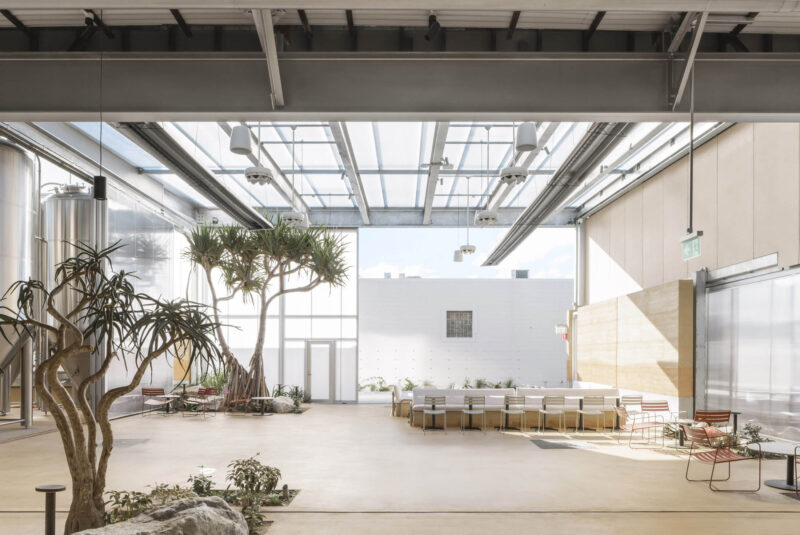场地现状 Site situation
设计场地凤凰台位于苏州太湖中心的长沙岛,太湖大桥1号桥南端,是1号桥与2号桥的链接岛屿,前往西山必经该岛。长沙岛是太湖东西山岛屿之一。因岛四面环湖,俯瞰状如凤凰,凤凰台因此而得名。
The Phoenix Terrace is located on Changsha Island in the center of Taihu Lake, Suzhou. It is situated at the southern end of Bridge No. 1 of the Taihu Bridge and serves as the connecting island between Bridge No. 1 and Bridge No. 2, making it a necessary passage to Xishan. Changsha Island is one of the islands in the east and west of Taihu Lake. The island is surrounded by the lake on all sides and resembles a phoenix from above, which is how Phoenix Terrace got its name.
∇ 场地现状,Original buildings © 平介设计
凤凰台原是一处景点,全园占地八亩,构造小巧精深。园内层楼错落,琼阁巍峨,有阅波桥、烟雨亭、数帆楼、凤栖阁、小石山房等景点,但是目前处于废弃状态。旧有的混凝土结构的屋面、横梁只有局部破损,整体较为完整。
Originally a scenic spot, Phoenix Terrace covers an area of eight acres and features a compact yet intricate design. The garden includes various attractions such as Yuebo Bridge, Misty Rain Pavilion, Shuofan Tower, Fengqi Pavilion, and Small Stone Mountain House. However, it is currently in a state of disrepair. The old concrete roof and beams are only partially damaged, with the overall structure remaining relatively intact.
坐在风景如画的太湖畔,该场地不仅提供了绝佳的观景视角,还承载着丰富的文化和历史记忆。站在凤凰台上,游客可以极目远眺,尽享太湖的湖光山色,感受自然与历史的交融。
Situated on the picturesque shores of Taihu Lake, this site offers not only an excellent vantage point for viewing the scenery but also holds rich cultural and historical significance. From Phoenix Terrace, visitors can enjoy sweeping views of the lake’s natural beauty and experience the harmonious blend of nature and history.
设计定位 Design concept
我们踏着过去的足迹,将美、信仰与艺术联系起来,将过去的建筑空间转变为一种永远不会改变或破坏的现代形式。废墟是标记、遗迹、印记,它们也讲述了基础和真理,它们是灯塔、基本点,指引着我们的设计和我们的选择。
We tread in the footsteps of the past, connecting beauty, faith, and art, transforming the architectural space of the past into a modern form that will never change or be destroyed. Ruins serve as markers, remnants, and imprints; they speak of foundations and truths. They are beacons, fundamental points guiding our design and choices.
∇ 从对岸看凤凰台,Phoenix Terrace from the other side of the lake © 王尚
∇ 从对岸看凤凰台,Phoenix Terrace from the other side of the lake © 王尚
∇ 从入口看凤凰台,Phoenix Terrace from the entrance © 王尚
此次改造项目的核心理念是“历史与未来并置”。设计团队旨在通过现代设计手法,赋予这座历史建筑新的生命,选择耐候钢板和黑色钢板作为主要材料,耐候钢板的自然锈蚀效果与石头的古朴质感相得益彰,形成了鲜明的对比和和谐的统一,既保留了建筑的历史感,又赋予其现代感。该项目将成为太湖周边乃至长三角地区有知名度和美誉度的一张名片,打造一个集文旅度假、高端俱乐部、咖啡厅和艺术文化创作于一体的太湖度假区。
The core concept of this renovation project is the “juxtaposition of history and future.” The design team aims to breathe new life into this historic building through modern design techniques. They have chosen weathering steel and black steel as the primary materials. The natural rust effect of the weathering steel complements the rustic texture of the stone, creating a striking contrast and harmonious unity that preserves the building’s historical feel while imparting a modern touch. This project will become a renowned and prestigious landmark around Taihu Lake and the Yangtze River Delta region. It aims to create a Taihu Resort Area that integrates cultural tourism, luxury clubs, cafes, and artistic and cultural creation.
设计策略说明 Design strategy
在接手这个项目的时候,植被已经占据了整个建筑,在石头的裂缝之间生长。空间设计方面,建筑师并没有完全移除这种 随着时间推移而生长的“植物盔甲” ,而是决定尊重它,将其视为“历史古迹的重要组成部分”,在建筑物空置时保护其免于倒塌。在设计过程中整合了建筑周边的绿化和景观元素,使建筑与自然环境相得益彰。
When taking on this project, vegetation had already taken over the entire structure, growing between the cracks in the stone. In terms of spatial design, the architects chose not to completely remove this “plant armor” that had developed over time. Instead, they decided to respect it, viewing it as “an integral part of the historical monument” that protected the building from collapse during its period of vacancy. The design process integrated the greenery and landscape elements surrounding the building, enhancing the harmony between the structure and its natural environment.
∇ 设计策略,Design strategy © 平介设计
∇ 剖面图,Section © 平介设计
此处内容需要权限查看
会员免费查看






